Ingram M-10
By Duncan Long
Gordon Ingram returned from his duties in the US Army during WWII with an eye toward producing a submachine gun that was both more reliable and more efficient than those he'd seen during the war. He created a series of models that resembled the Thompson Submachine Gun outwardly; unlike the Thompson, however, these new guns required a minimum of machining and were simple to operate.
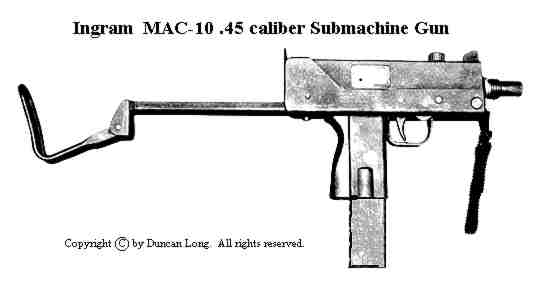
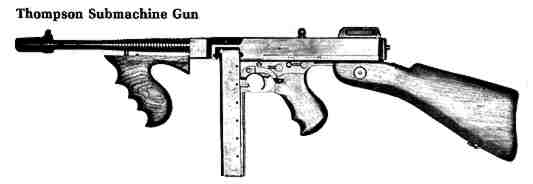
Of the Ingram series, the Model 6 enjoyed a very few sales, mostly to South American governments. Unfortunately Ingram's timing was bad; there wasn't much of a market for submachine guns and what little market there was, was being filled with surplus arms from WWII.
In 1964 Ingram set out to rethink the basic submachine gun design. The end of his efforts was the Model 10 or M-10. This gun is little larger than a conventional pistol but has a telescoping/folding metal stock and a front strap for aid in controlling the gun. The bolt telescopes around the barrel which extends back into the gun to just in front and above the magazine well.
Two chamberings of the M-10 were offered, one in 9mm Luger and the other in .45 ACP. Later Ingram created an even more compact version of the gun, the M-11, chambered for .380 ACP. All fire with extremely high cyclic rates; this may very well have been the factor that kept these guns from being accepted by potential buyers.
In 1967 Ingram joined forces with Mitchell Livingston WerBell III, a silencer designer. Soon the two had formed a business alliance with the WerBell suppressers being mounted on the M-10 pistols as a complete weapons system that was both compact and quiet. The two inventors spent much time trying to secure contracts from the US government (which was embroiled in the Vietnam War). But there efforts never produced any results. Military personnel were very interested in the new arms, but the orders never followed.
In the early 1970s, the rights to the gun/suppresser combination were purchased by MAC (Military Armament Corporation) and the guns became known as the MAC-10 and MAC-11. Unfortunately WerBell and Ingram lost control of the company at this point and the new owners practically booted both of them out of the operation.
A number of other variants of the M-10 have since been produced including the M-11/9 (a compact 9mm version of the M-11) and semiauto "assault pistol" versions of the gun. All of these have met with varying success. But the original goal of Ingram, to create a viable military submachine gun, has never really been realized. The military just never seemed to become more than mildly curious about the inventor's super-compact submachine guns and has instead opted for "chopped" rifles like the AR-15 variant, the M4 Carbine, or the Heckler & Koch MP5 submachine gun.
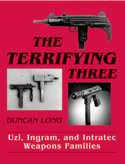 For a more detailed look at the M-10 and its many variants as
well as the TEC-9 and Uzi series of guns along with accessories
for these firearms, see Duncan Long's lavishly illustrated book,
The Terrifying Three, available for Paladin Press P.
O. Box 1307, Boulder, CO 80306-1307 Phone: 800-392-2400.
For a more detailed look at the M-10 and its many variants as
well as the TEC-9 and Uzi series of guns along with accessories
for these firearms, see Duncan Long's lavishly illustrated book,
The Terrifying Three, available for Paladin Press P.
O. Box 1307, Boulder, CO 80306-1307 Phone: 800-392-2400.
Also, be sure to visit Cobray's site for details about variants of the M-10 that are currently available to the public and qualified buyers.

If the article above was of interest, chances are you'll also enjoy these books by the same author:
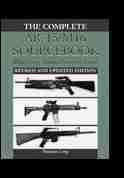 All-new, 2nd Edition of AR-15/M16 Sourcebook by Duncan Long This carefully researched, newly revised manual covers the history, military and custom spin-offs, grenade-launchers, SAW versions, and accessories of this popular firearm. If you own an AR-15, or would just like to learn more about this firearm, you need this book. Marketed by Paladin Press.
All-new, 2nd Edition of AR-15/M16 Sourcebook by Duncan Long This carefully researched, newly revised manual covers the history, military and custom spin-offs, grenade-launchers, SAW versions, and accessories of this popular firearm. If you own an AR-15, or would just like to learn more about this firearm, you need this book. Marketed by Paladin Press.

 Protect Your Privacy: How to Protect Your Identity as well as Your Financial, Personal, and Computer Records in an Age of Constant Surveillance by Duncan Long Identity theft is at an all-time high. Protect Your Privacy gives you everything you need to know about protecting your computer security, financial and telephone privacy, identification, freedom of movement, and more! Learn to safeguard your privacy in virtually every situation—on the Internet, telephone, face-to-face, even with the government enforcing the Patriot Act. Stop scam artists before they have a chance to compromise your private information. From Lyons Press.
Protect Your Privacy: How to Protect Your Identity as well as Your Financial, Personal, and Computer Records in an Age of Constant Surveillance by Duncan Long Identity theft is at an all-time high. Protect Your Privacy gives you everything you need to know about protecting your computer security, financial and telephone privacy, identification, freedom of movement, and more! Learn to safeguard your privacy in virtually every situation—on the Internet, telephone, face-to-face, even with the government enforcing the Patriot Act. Stop scam artists before they have a chance to compromise your private information. From Lyons Press.

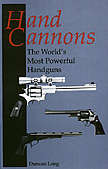 Hand Cannons by Duncan Long This book gives a detailed look at the Desert Eagle variants as well
other .50 caliber and other large semiauto pistols, revolvers,
single-shot pistols from the famous .44 Magnum cartridge on up to the mammoth .50 BMG. Long evaluates these massive pistols and reveals how to tame their recoil and muzzle blast to improve their accuracy. 5 1/2 x 8 1/2, softcover, photos, illus., 208 pp., Marketed by Paladin Press.
Hand Cannons by Duncan Long This book gives a detailed look at the Desert Eagle variants as well
other .50 caliber and other large semiauto pistols, revolvers,
single-shot pistols from the famous .44 Magnum cartridge on up to the mammoth .50 BMG. Long evaluates these massive pistols and reveals how to tame their recoil and muzzle blast to improve their accuracy. 5 1/2 x 8 1/2, softcover, photos, illus., 208 pp., Marketed by Paladin Press.

Duncan's Short Stories and Articles
Duncan's Digital Artwork "1st Encounters"
Duncan's Digital Music